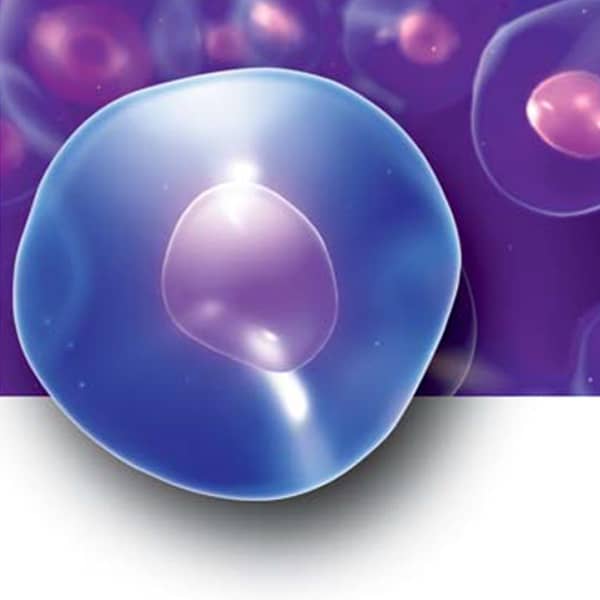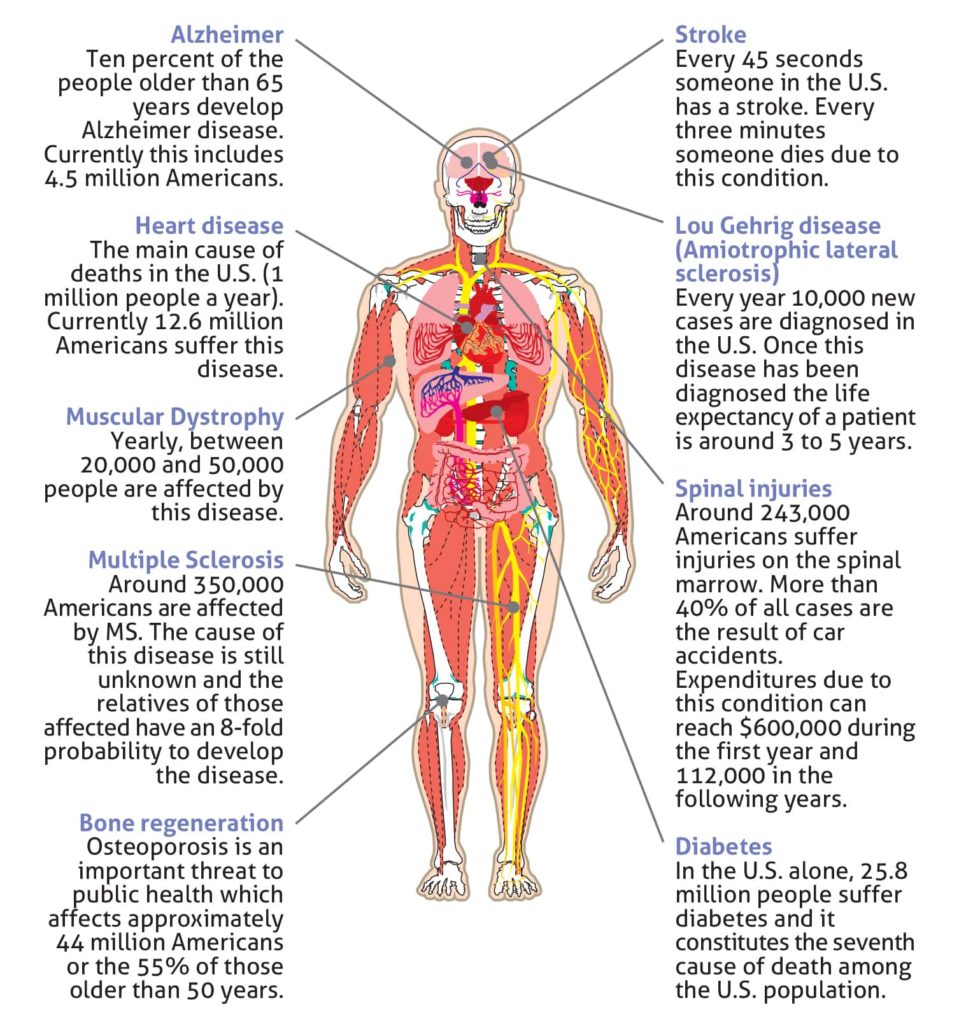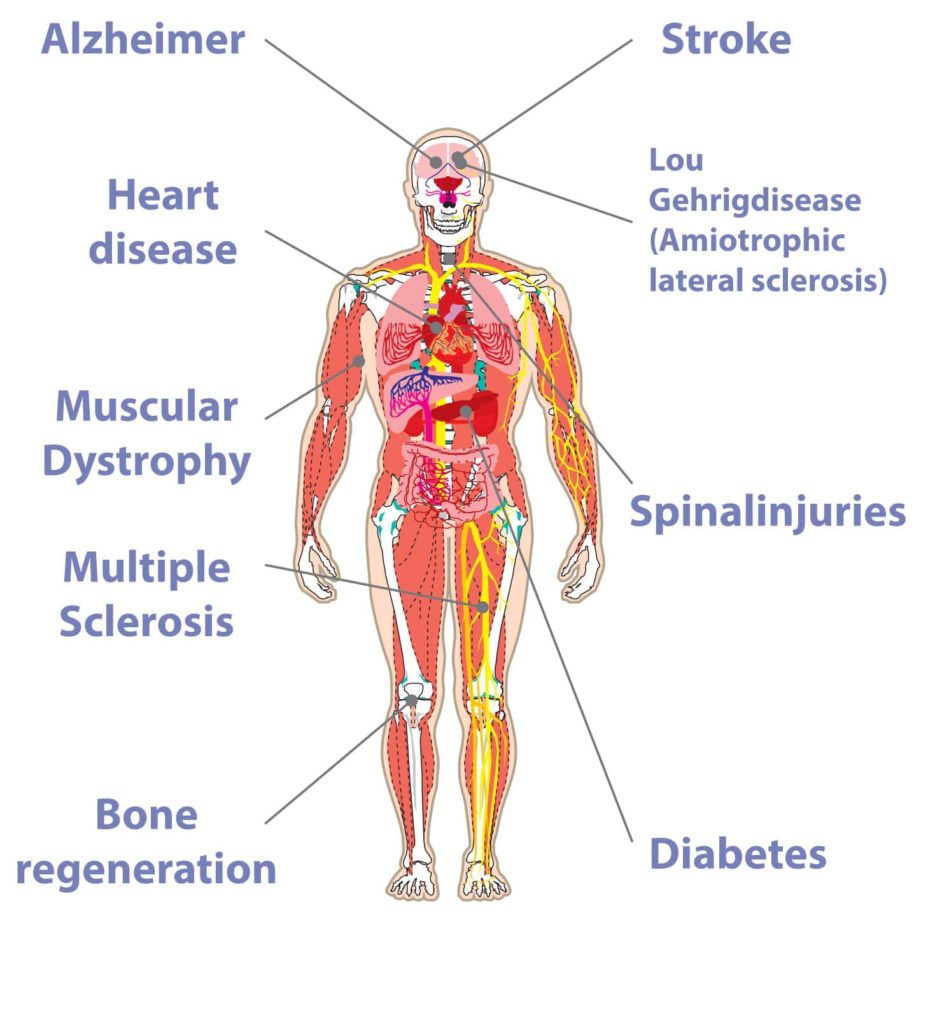Dental Pulp Stem Cells
Dental Pulp Stem Cells
Why are dental pulp stem cells so specíal?
The stem cells found in dental pulp are a type of non-controversial adult stem cell known as a mesenchymal stem cell.
Mesenchymal are stem cells that can differentiate or “mature into” many different cell types including; osteoblasts (bone cells), chondrocytes (cells that make up cartilage), myocytes (muscle cells), adipocytes (fat cells), neurons and recently described beta cells (cells found in the pancreas that synthesize insulin).
This multipotent potential makes these cells an excellent candidate for “regenerative medicine” and tissue engineering applications.
A potential life-saving decision for the future
With all the emerging potential in tissue engineering applications using mesenchymal stem cells, a child’s loose tooth, extracted wisdom teeth, extracted adult teeth and pulpectomy can provide you with a first-rate source of mesenchymal stem cells source to be used in the future for cellular-therapy applications.
Mesenchymal stem cells have shown amazing promise in the potential treatment for Parkinson’s and Alzheimer’s disease, Type I diabetes, heart attack, stroke, Multiple Sclerosis, ALS, spinal injury and several others.
In the past, extracted teeth and related material has been view as medical waste and discarded, resulting in the loss of this potential life-saving resource. Now you can save these cells through GeneCell International’s Dental Pulp Stem Cell Banking Program, so that you may have access to them in the future.

What are stem cells?
Stem cells are generically defined as precursor or progenitor cells that have the potential to differentiate (mature into) into a wide variety of tissue.
Although often dichotomously categorized as either embryonic or adult, they actually represent a continuum of cell types that eventually transform into our “end-product” tissue.
Dental pulp was recently found to contain adult stem cells (minimizing any political or ethical issues as seen with embryonic stem cells) and through some dedicated research, are showing amazing potential for tissue engineering applications and treat several degenerative conditions.
Benefits of Banking Dental Pulp Stem Cells
Imagine a world where we can create living, functional tissues to repair or replace tissue or organ function lost to age, disease, damage, or genetic defects. Dental pulp stem cells hold the potential of possibly regenerating damaged tissues and organs in the body by stimulating organs to heal themselves.
It also potentially empowers scientists to grow tissues and organs in the laboratory and safely implant them when the body cannot heal itself. This is no longer science fiction, it is becoming a reality and dental pulp stem cells may prove to be an important factor in this reality.
Important Statistics
1 in 7 North Americans prior to age 70 will require treatment for cardiac repair (i.e., Myocardial Infarction or Congestive Heart Failure) (Nietfeld & Verter, 2004).
25.8 million people in the US alone have diabetes with this number increasing by 1.9 million annually (American Diabetes Association).
1 million people in the USA suffer from Parkinson’s disease with this number increasing by 50,000 annually (Parkinson’s Disease Foundation)
350,000 people in the USA suffer from MS with this number increasing by 10,400 annually
In the near future, stem cells from dental pulp may provide effective treatment option for these debilitating disorders.
The stem cells from dental pulp may be one of the most promising cell-therapies in the future. Those who preserve the dental pulp stem cells do it in order to feel at ease, knowing that those cells may have future uses extremely valuable for their family.
What is the Dental Pulp?
A small mass of connective tissue, blood vessels, nerves, and stem cells located in a chamber within the dentin layer of a tooth (the pulp chamber is found in the crown and the root of the tooth).

Potential Uses


Alzheimer
Ten percent of the people older than 65 years develop Alzheimer disease. Currently this includes 4.5 million Americans.
Heart disease
The main cause of deaths in the U.S. (1 million people a year). Currently 12.6 million Americans suffer this disease.
Muscular Dystrophy
Yearly, between 20,000 and 50,000 people are affected by this disease.
Multiple Sclerosis
Around 350,000 Americans are affected by MS. The cause of this disease is still unknown and the relatives of those affected have an 8-fold probability to develop the disease.
Bone regeneration
Osteoporosis is an important threat to public health which affects approximately 44 million Americans or the 55% of those older than 50 years.
Stroke
Every 45 seconds someone in the U.S. has a stroke. Every three minutes someone dies due to this condition.
Lou Gehrigdisease (Amiotrophic lateral sclerosis)
Every year 10,000 new cases are diagnosed in the U.S. Once this disease has been diagnosed the life expectancy of a patient is around 3 to 5 years.
Spinal injuries
Around 243,000 Americans suffer injuries on the spinal marrow. More than 40% of all cases are the result of car accidents.
Expenditures due to this condition can reach $600,000 during the first year and 112,000 in the following years.
Diabetes
In the U.S. alone, 25.8 million people suffer diabetes and it constitutes the seventh cause ofdeath among the U.S. population.
“Research related to stem cells could eventually lead to
therapy that could be used in treating diseases that affects
nearly 128 millions of Americans”
Extractfrom o press release from the White House dated 9/8/01
Even though the applications of dental pulp stem cells are emerging, there are not any warranties that the dental pulp stem cells may produce any cure.
Collection Process
When a Client is enrolled in the Service, the Client receives a Dental Pulp Collection Kit with the required elements for the collection of the tooth/teeth.
The Kit must be taken care of and stored in a safe place at room temperature, until the dental appointment. The dentist will be provided instruction in the kit for the procurement of the tooth/teeth.
Once the procurement is complete, the tooth/teeth sample is sent to our laboratory for processing and cryogenic storage.
The sample must remain at room temperature and must not be refrigerated. Once received at our laboratory, the processing and cryopreservation process begins.
GeneCell International
Our Laboratory
GeneCell International is committed to excellence in processing and cryogenically store your dental pulp stem cells.
Using state-of-the-art equipment and highly qualified personnel, we ensure the highest quality standard is upheld thus providing the best possible service for our clients.
Our laboratory is based in the dynamic city of Miami, by making south Florida our home we have access to a very diverse clientele providing us with the unique opportunity of working in a world class city known for being the gateway to international communities.
Our highly qualified laboratory director who has overseen tens of thousands of processed stem cell units supervises our laboratory. The laboratory technicians are highly experienced in processing and storing stem cell samples.
Our clients can rest assure that their child’s processed dental pulp stem cells will be stored under proper temperatures at all times. Our cryogenic storage devices are monitored and backed up by our reliable generators and back up nitrogen tanks in the facility.
Our Processing
Your tooth/teeth can be shipped to our facility immediately after the collection has taken place.
All the necessary materials needed for the processing of your tooth/teeth will arrive at our laboratory under controlled conditions in order to guarantee the safeguard of the unit.
We process our client’s dental stem cells using a highly validated processing procedure developed by our scientists here at GeneCell International.
This procedure is unique and follows the FDA guidelines for minimal manipulation of the tissue.
All our processing and testing takes place under Strict Ouality Control conditions.
Our Cryogenic Storage
An important aspect to maintain viability of the Dental Pulp Stem Cells throughout the processing and cryopreservation is controlling the rate of freezing and the subsequent sustained cryogenic temperature of the cells once they are in cryogenic storage.
Our laboratory uses a staged freezing process that ensures the cell’s future viability.
Once the cells are brought to the optimum temperature, they are placed in an continuously monitored cryogenic freezer.

Prices

Banking the stem cells
is a life-saving opportunity
